Avoid adding toxins to your foods when you cook. Here are guidelines for how to choose the best healthy cookware to go with your healthy diet!
Superior Choice - Inert, Non-Reactive Cookware
1. Earthenware and ceramic are inert and they emit a far-infrared heat, the most effective and beneficial heat for cooking, which enables a full range of subtle flavors to emerge. Excellent for lengthy simmering and baking, these beautiful but breakable items require special handling.
Do not purchase ceramic-coated cookware. Just like other non-stick cookware, the synthetic ceramic surface layer degrades with normal use.
Purchase only 100% ceramic cookware; it is nonreactive, contains no toxic metals or synthetic polymers and it withstands erosion and temperatures up to 1800 degrees Fahrenheit. Only diamonds and sapphire have harder surfaces than ceramic.
Xtrema* has a full line of moderately priced ceramic cookware and bakeware that is more durable than earthenware. 100% ceramic knives are nonreactive and hold their edge up to 15 times longer than conventional steel blades.
Spanish cazuelas and older Romertopf baking dishes are excellent earthenware choices and you may find casseroles and pie pans from your local potter. (Note: antique ceramic or earthenware pots may contain lead. Inexpensive lead-testing kits are available at hardware stores.)
Corningware and its discontinued line, Visionware, are made of pyroceramic glass and are non-reactive but poorly conduct heat.
2. Enamel is a fused glass surface overlaying a light metal–or a heavier cast iron–pot. With proper care, quality enamel cookware lasts a lifetime. There are various brands available; do an on-line search for users comments to determine the line that best suits you. Note: inexpensive enamel cookware has only a thin layer of enamel and is not as durable as that with two or more layers.
Discard chipped enamel cookware. Once the underlying metal is exposed, it reacts with food and enamel fragments find their way into your food. The only company I’m aware of that replaces worn cast enamel cookware is Le Creuset*.
3. Glass coffee pots and casserole dishes are inert and affordable. Favor glass containers for storing food. By the way, if you’ve got old glass bake ware, don’t replace it with newer glass! Pyrex and Anchor Hocking, our two major domestic producers of glass bake ware, are currently using a soda lime glass that can shatter under high heat. European glass wear is made from the more durable, and pricy, borosilicate glass, as was our domestic glassware prior to the 1980s.
4. Bamboo steamers and paddles as well as wooden spoons, chopsticks and crockery are non-reactive and modestly priced.
5. Paper Goods are, in some applications, effective. Line reactive aluminum muffin tins or cookie sheets with 100% un-bleached muffin cups or parchment paper. (Note: natural parchment paper is coated with non-reactive silicon, not the chemical quilon). And for food storage, as is practical, favor waxed or butcher paper over plastic wrap or bags.
Note: While 100% Titanium is non-reactive, it’s too pricy for cookware. Titanium coated cookware is typically aluminum cookware with a fused synthetic polymer-titanium, nonstick coating. It is reactive and not recommended. SaladMaster’s line of surgical grade (316) stainless steel pots includes titanium; however the company refuses to disclose the percentage of titanium. We must therefore conclude that it is comparable quality to other surgical grade stainless cookware.
1. Stainless steel is the least reactive metal, and for many people, the most versatile and healthful cookware option. It makes an acceptable set of basic pots, pans and bake ware. Because it unevenly conducts heat, most stainless cookware is clad or encloses an aluminum core. The term “ply” refers to the number of layers; the higher the ply, the heavier the pot and the more resistant it is to warping. Most stainless steel is 18/10 meaning that it contains 18% chromium and 10% nickel. The 18/0 designates a nickel-free product.
Remove food from metal as soon as it is cooked to minimize it developing a metallic taste. Once stainless steel has been scratched by heavy scouring, it will leach chromium and copper (if it contains copper). Therefore don’t scour stainless cookware. When you’ve burned something onto the pot, cover it with baking soda, salt or a strong detergent and let it rest for a day or more if necessary. The soda will “lift” off the scorched food.
A stainless steel knife is less reactive than a carbon steel knife but it doesn’t hold its edge quite as well.
2. Carbon steel is inexpensive, thin, lightweight and ideal for a wok or crepe pan because it rapidly conveys heat. With use, it will develop a non-stick like patina but prior to that do not use it with liquid or acidic ingredients and dry it thoroughly after every use to prevent rust. Since carbon steel is reactive, do not use a carbon steel knife for cutting acidic foods like citrus or tomatoes.
3. Cast iron pots are good for quick breads, pancakes and for sautéing vegetables. Do not, however, use cast iron for soups, liquids or acid foods as these foods leach harsh-tasting iron from the pot. Although a soup cooked in cast iron becomes iron-enriched, this heavy metal is not bioavailable.
4. Silicone cookware. If you use silicone cookware, purchase only 100% silicone that is FDA approved and safe up to 428 degrees Fahrenheit). This is critical as there are countless silicone formulas and some products, such as the popular bake sheets, are only silicone coated. But does an FDA approval mean that silicone cookware is non-reactive? Not according to a 2005 British study that determined while the overall the chemical migration from the silicon into foodstuffs was low, it does occur.
The advantages of silicone include heat resistance (below 428 degrees Fahrenheit), flexibility, the fact that it can go directly from the oven or microwave into the refrigerator or freezer and that it is generally easy to clean.
Coda: Cookware is only part of the story of cooking and healthy eating, albeit a very important part. Knowing what foods may cause intolerances in our body is the most overlooked yet simple way to influence our health. In my book, Read Your Face, I show how to identify obvious clues about diet and health – things you can easily change for happier and healthier eating. Learn more about Face Reading and Diet.
Rebecca Wood is the author of The New Whole Foods Encyclopedia* and The Splendid Grain.* For over 30 years she has helped people regain their health and energy with an easy-to-implement whole foods diet. Find out about her books and diet consultations at www.rwood.com.
- Explore VegKitchen’s other Green Kitchen articles, as well as the wealth of kitchen tips
in the entire Healthy Vegan Kitchen area.
*This post contains affiliate links. If the product is purchased by linking through this review, VegKitchen receives a modest commission, which helps maintain our site and helps it to continue growing!


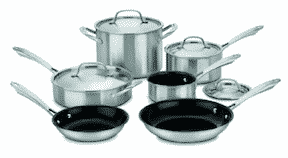
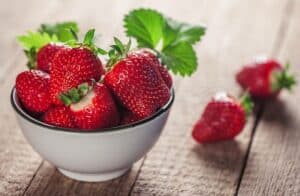
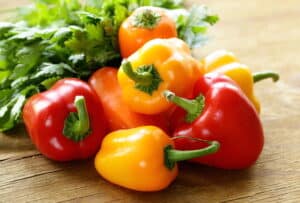
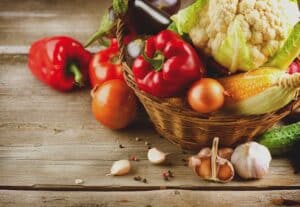
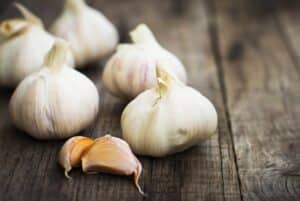
Mechef145 says
Nice Post! The earthen ware is the safest. I've been using un-glazed pure clay pots for about 2 years now. Most important is that my pure clay pot is non-toxic, metal and chemical free (does not react with food). The unique steam locker lid seal steam & water soluble nutrients inside to give you the healthiest food. I got it from mecware.US
Nava says
Thanks for this great tip!
fonzo says
I bought the large set.
They are extremely delicate. The surface is tough and can handle a brillo bad. bit the inside is just red clay that bakes like a plant pot. the surface for some reason is very sticky you cook an egg half of hit is stuck to the pan. I've tried oils butter even pre heating it still makes my food stick. I wished they worked better and were tougher. I would be happy.
So far i've broke two and I'm very careful to the point of thinking about the pan more then what and how Im cooking. If anyone knows of a healthy alternation I would like to know.
Janet Sanchez says
I've been looking for the best cookware materials and from the many discussions that I've read, i find that you've explained many of issues much better. But I'm particularly concerned about the safety of my cookware. You mentioned that Titanium is the best but i agree that it's too expensive. So is stainless steel good enough? Or maybe it's better to go for titanium?
jennie Blakely says
I have and use several types of silicone baking products, including the Silicone bake ware and I love them.The directions that came with all of them said to spray them with non-stick spray prior to first use.I did and had no problem cleaning them. About every third use I give them a quick spray again.I think in over 3 years I have only had one section an my mini-loaf pan that the batter stuck and I had to scrub it clean. The cupcake liner have never stuck.
I don’t have a dishwasher, I just put them in hot soapy water, give them a quick wash, rinse, and air dry in the dish strainer.
Jaki says
The Healthy cookware to me would be the one which is un-glazed, metal and chemical free. I have replaced most of my metal and ceramic cookware with pure clay cookware and they do a great job in my kitchen. I use them to cook almost any recipe except for the dry fries. The most important fact about it is that they seal all the water soluble nutrients in and give you a healthier food. The clay used is tested to be lead and cadmium free and is sourced and handcrafted in US.
saidat dabiri says
I am interested in the unglazed earthenware cookware. How can I buy it, I live in NIGERIA but i am very concious of health.
saidat dabiri says
The earthenware I mean is unglazed clay pots.
Darin says
Hello,
I was thumbing through your book The New Whole Foods Encyclopedia. I came across the section regarding cookware. In this section, you mention Vision Ware. This is a glass/polymer, correct? Is it non-reactive and safe or no? I looked at your website and you mention Corning and Vision Ware being non-reactive because they are glass. Is there another brand that is better/safer? Thank you.
xeta says
I've only recently found discussions of nickel free cookware as being a good thing. I've always looked for 18/10 for 'higher quality'. I bought a Farberware classic II set that is marked Durable. They have had sets labeled 18/10. Mine is magnetic all over and just ordered a 6 qt stock pot off Amazon that actually says it's 18/0 in the description. You get the classic look of Farberware and less Nickel. Cool beans.
Athebest says
Cooking in pure clay pots will give you the best results. @ fonzo, I got the set of 3 too... while they look delicate, in my experience they are very durable and versatile. But it's important that they be seasoned before 1st use. Its a one time process and takes about 20-30 minutes cook time, 5-10 minutes hands on time. And just like everything in nature so long as some simple instructions are followed they are really easy to use. You can't use them like metal pots, there's a simple technique to it and its totally worth learning because i cannot find another non-toxic pot as close to these. Another great thing is, mine have become fully non-stick, now no food sticks to the pot/pan... even eggs come out perfectly. Now i use MEC's pure-clay pots for almost 90% of the cooking in my kitchen.
EL Mehdi says
Thanks for sharing this article. It's very helpful.I received a Pyrex cookware last week as a gift for my birthday, but I have yet tried to bake with it, to be honest, I'm hesitating to use it since it's Glass, I'm worried that it might break if I tried to bake with it.
Do you think it will be safe to put it in the oven and bake some cookies with it?